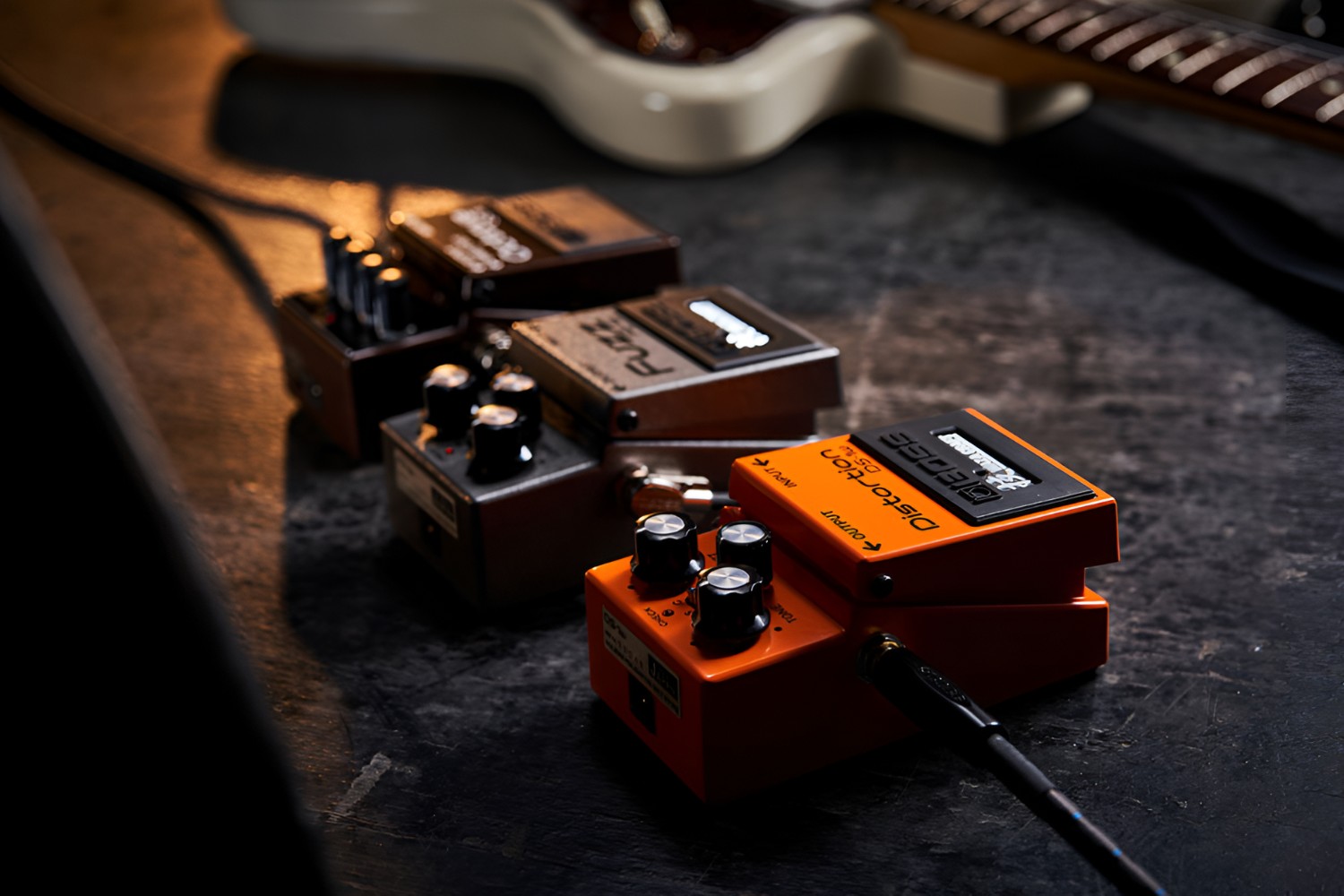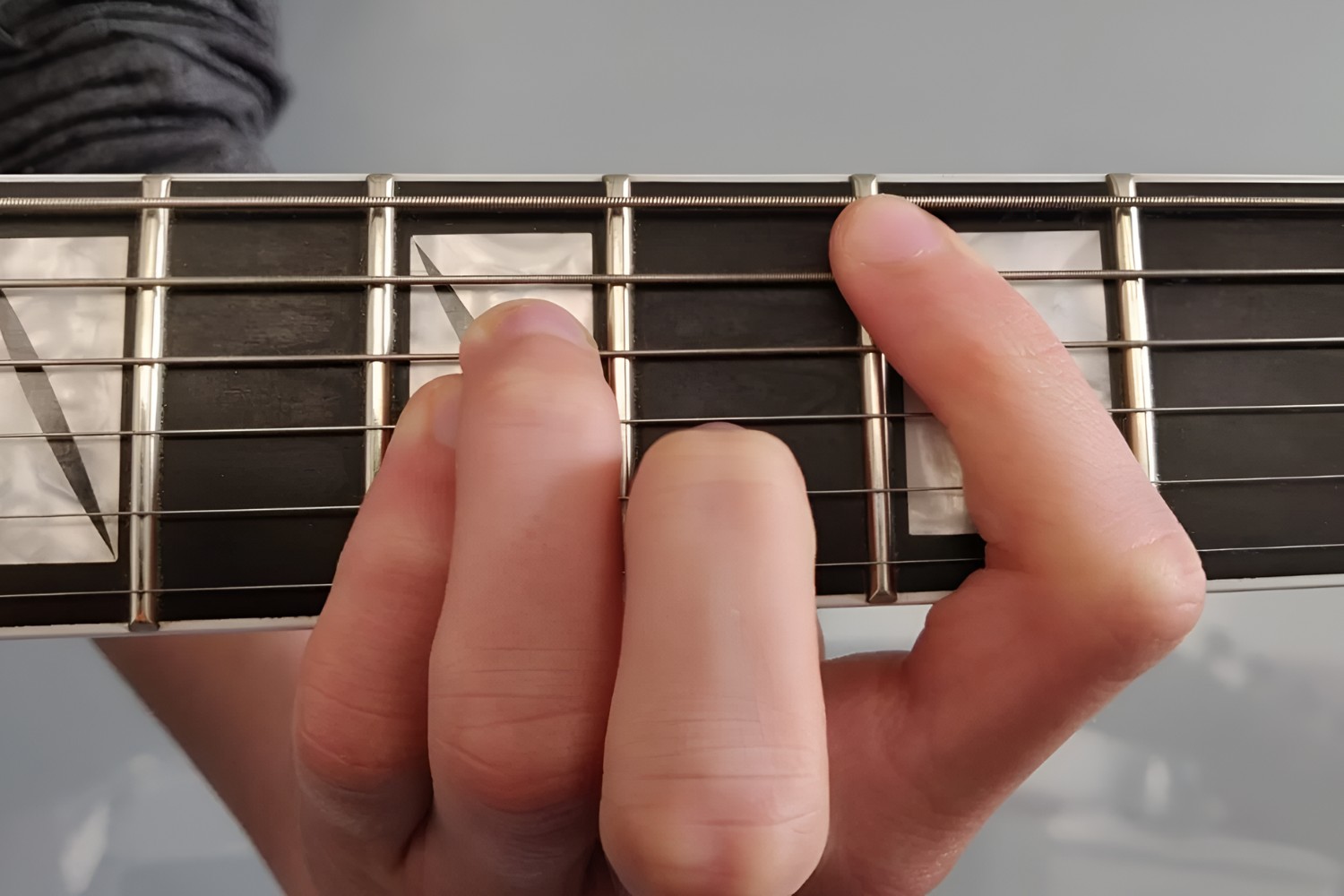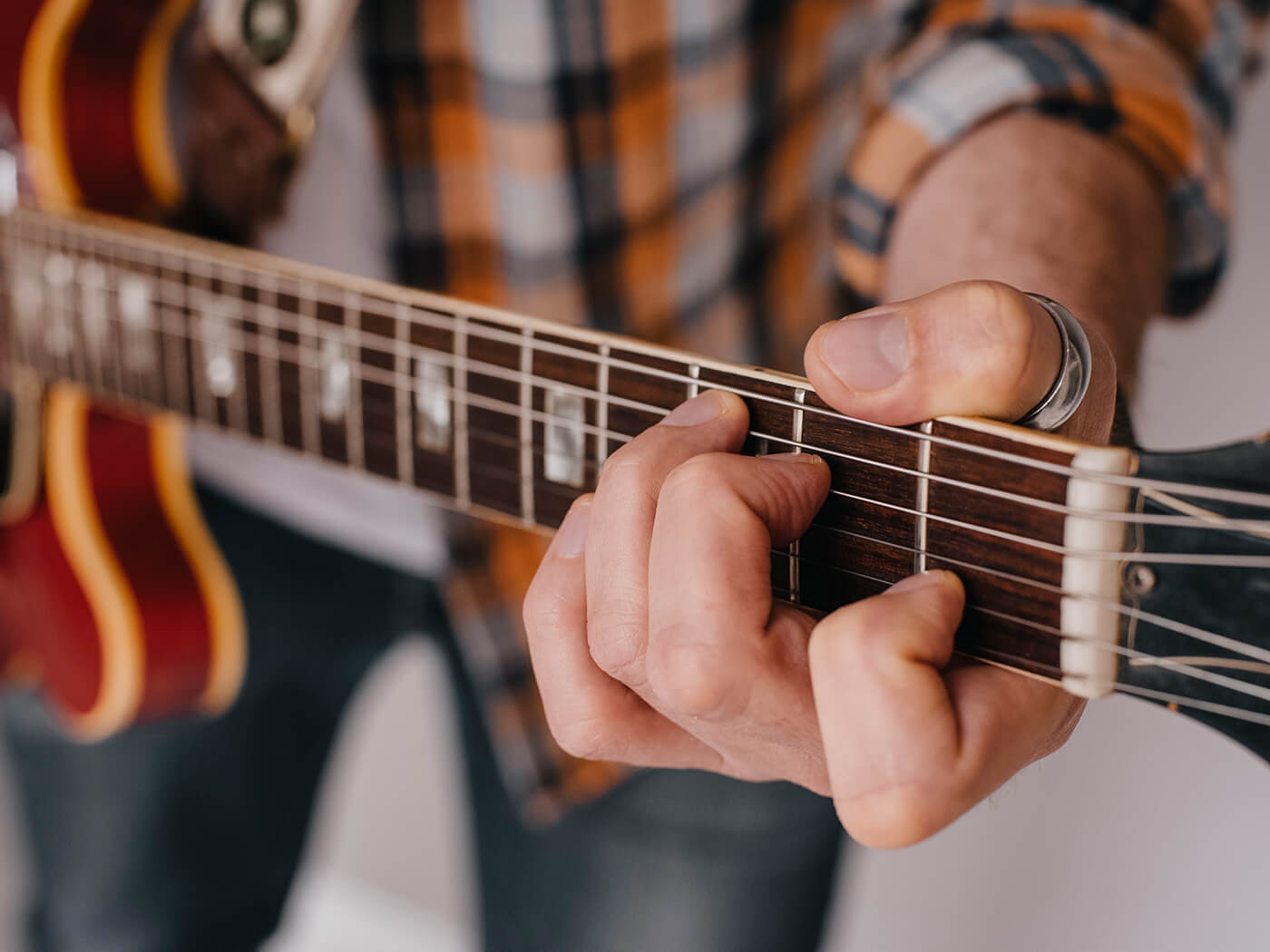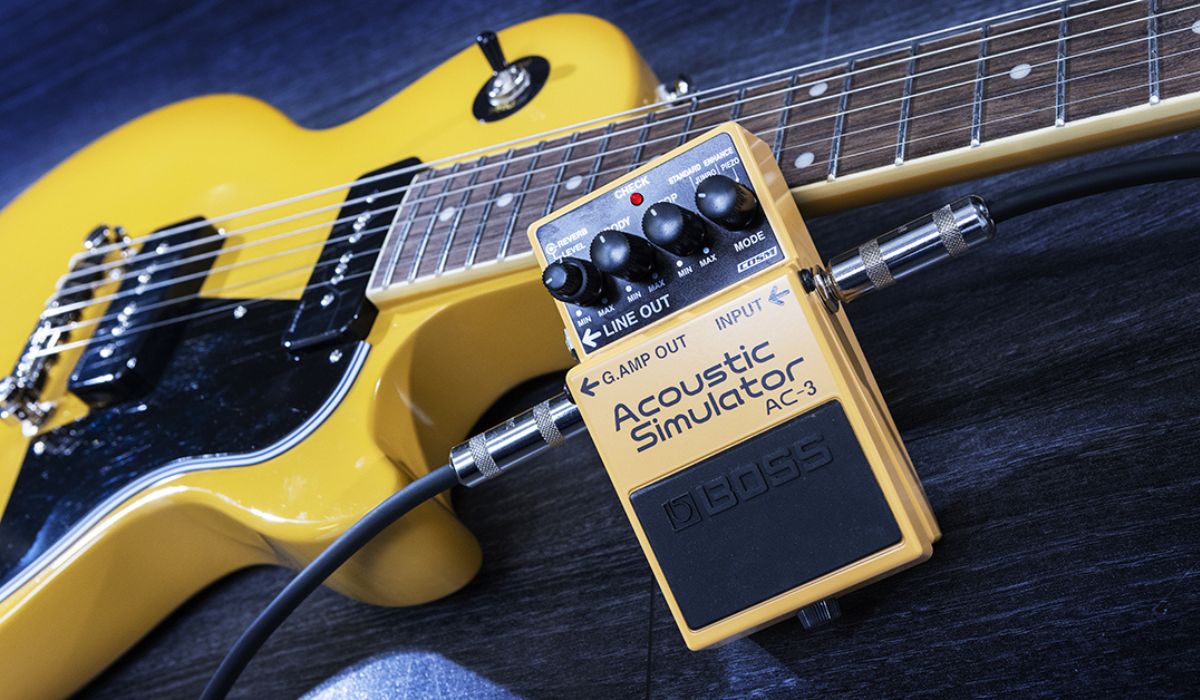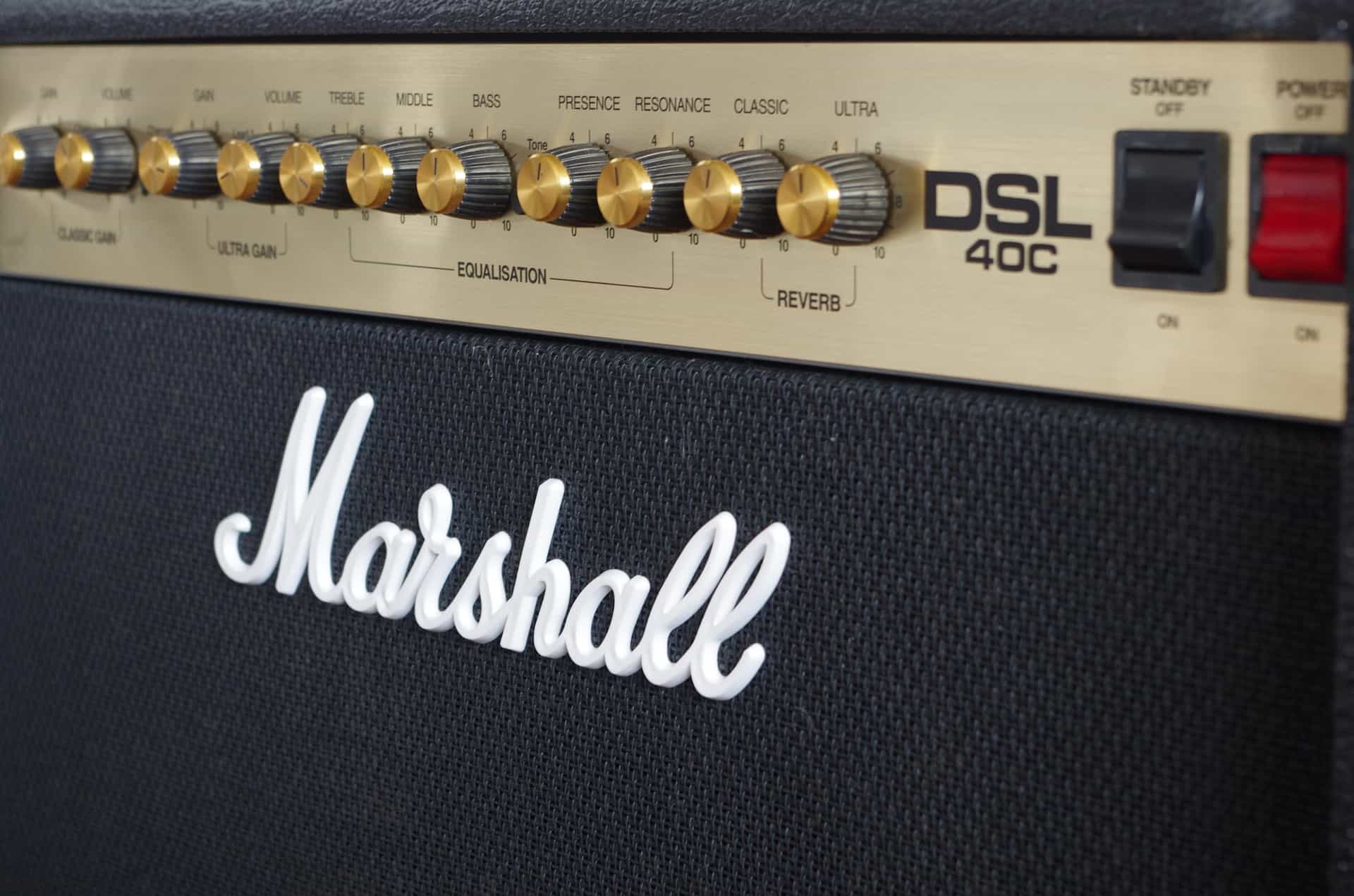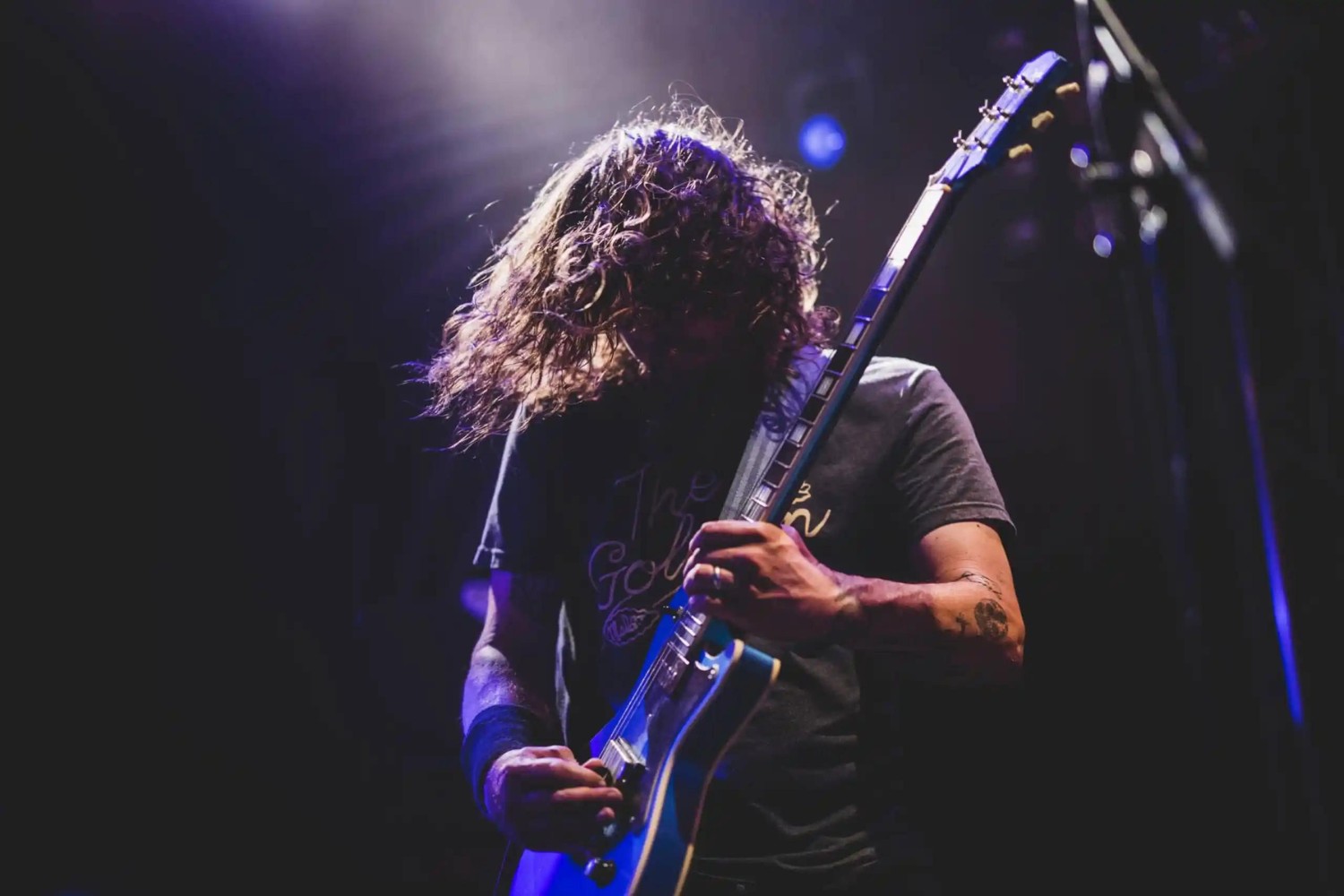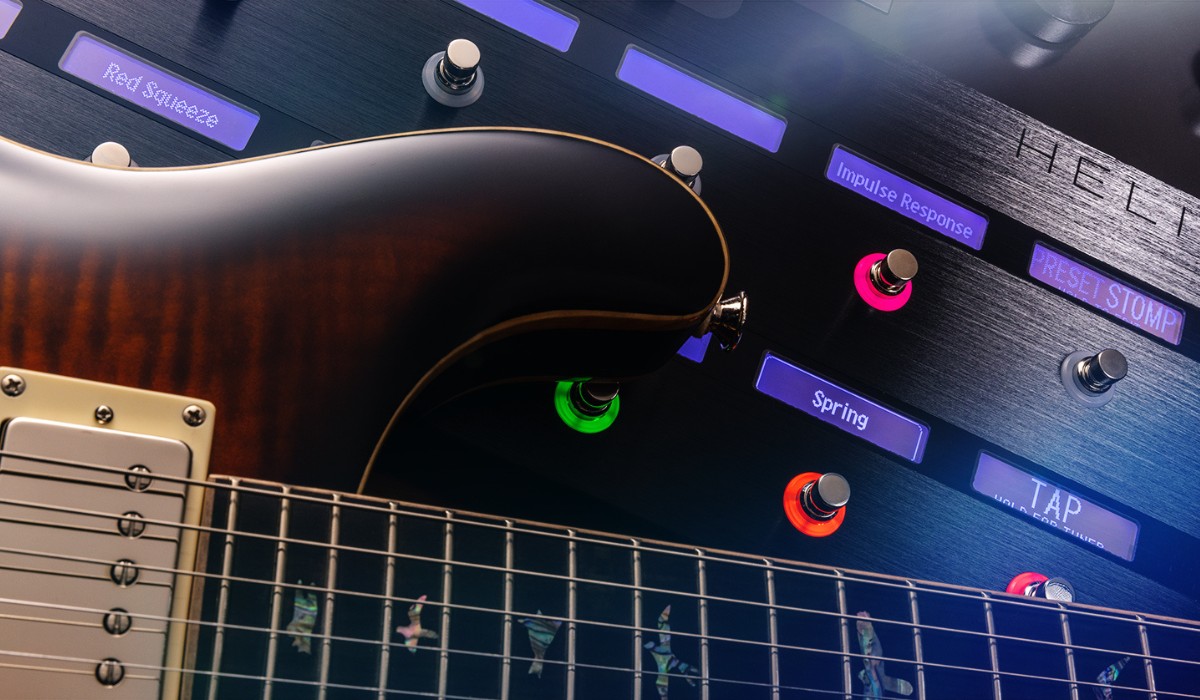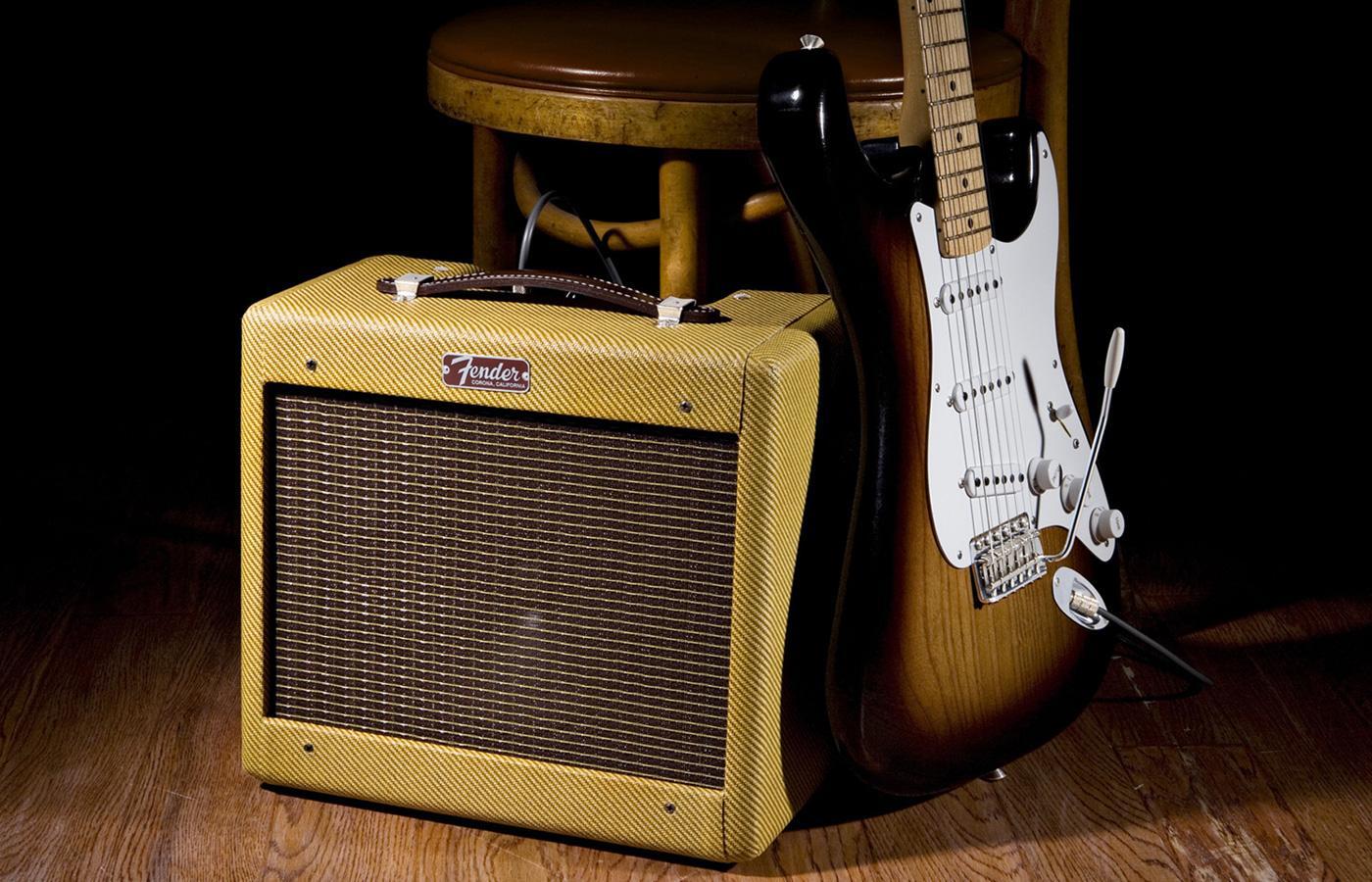Introduction
Are you ready to unleash the raw power and electrifying sound of a distorted electric guitar? Whether you're a seasoned musician or just starting your musical journey, mastering the art of distortion can take your playing to new heights. Distortion is a crucial element in various music genres, from rock and metal to blues and beyond. In this comprehensive guide, we'll delve into the intricacies of creating distortion on an electric guitar, exploring the different types of distortion, the role of distortion pedals, amp settings, and playing techniques. By the end of this article, you'll be equipped with the knowledge and skills to harness the captivating allure of distortion and infuse your playing with unparalleled energy and intensity.
The allure of distortion lies in its ability to transform the sound of a clean electric guitar into a powerful, gritty, and harmonically rich tone. Whether you seek the searing crunch of classic rock riffs, the aggressive punch of metal solos, or the soulful grit of blues licks, understanding and mastering distortion is essential. It's not just about making your guitar sound louder or edgier; it's about sculpting a sonic landscape that resonates with emotion and intensity.
As we embark on this sonic exploration, we'll unravel the mysteries of distortion, from its underlying principles to the practical techniques for achieving the desired effect. Whether you're drawn to the blistering solos of iconic guitarists or the wall of sound created by a distorted rhythm section, this guide will empower you to harness the full potential of distortion and elevate your musical expression.
So, grab your electric guitar, buckle up, and get ready to dive into the exhilarating world of distortion. Whether you're aiming to emulate the timeless tones of rock legends or carve out your own sonic identity, understanding the nuances of distortion is the first step toward unleashing your musical creativity and making your guitar sing with unparalleled intensity. Let's embark on this sonic journey and discover the transformative power of distortion together.
Understanding Distortion
Distortion, in the realm of electric guitars, is a sonic phenomenon that involves altering the guitar signal to produce a gritty, harmonically rich, and often aggressive sound. This transformative effect is achieved by intentionally overdriving the signal, resulting in a significant departure from the clean, undistorted sound typically associated with the instrument. Understanding the intricacies of distortion involves delving into the underlying physics of sound and the electronic behavior of amplifiers and effects pedals.
At its core, distortion introduces harmonics and overtones that enrich the guitar’s sound, adding layers of complexity and intensity. When a clean guitar signal is pushed beyond its linear amplification range, the waveform begins to clip, leading to the generation of harmonic overtones. These overtones contribute to the characteristic “crunch” or “grit” associated with distorted guitar tones, giving the sound its raw and aggressive edge.
One of the key elements in understanding distortion is recognizing the distinction between overdrive and distortion. Overdrive typically refers to a milder form of distortion that emulates the natural breakup of a tube amplifier pushed to its limits. It often retains the inherent characteristics of the guitar and amplifier, enhancing the natural warmth and dynamics of the sound. On the other hand, distortion pedals and high-gain amplifier channels push the signal into more extreme territory, creating a more aggressive and saturated tone.
Furthermore, understanding the impact of distortion on different frequencies and dynamics is crucial. Distortion tends to compress the guitar signal, reducing the dynamic range and resulting in a more sustained and powerful sound. This compression can be harnessed to sustain notes and chords, adding a singing quality to the guitar’s voice. Additionally, the way distortion affects low, mid, and high frequencies plays a significant role in shaping the overall tonal character, from thunderous low-end punch to searing high-end presence.
By comprehending the fundamental principles behind distortion, you can gain insight into how to manipulate and control this powerful sonic tool. Whether you’re seeking to craft searing lead tones, aggressive rhythm textures, or nuanced sonic expressions, a deep understanding of distortion provides the foundation for unleashing the full sonic potential of the electric guitar.
Types of Distortion
Distortion manifests in various forms, each offering distinct sonic characteristics and tonal qualities. Understanding the different types of distortion empowers guitarists to sculpt their desired sound with precision and creativity. Here, we explore the primary categories of distortion and their unique sonic signatures.
- Overdrive: Often considered a milder form of distortion, overdrive emulates the natural breakup of a tube amplifier pushed to its limits. It imparts a warm, dynamic, and responsive tone, retaining the inherent characteristics of the guitar and amplifier. Overdrive is favored for its ability to add grit and edge to the sound without sacrificing clarity and articulation, making it a versatile choice for blues, rock, and classic rock styles.
- Distortion: Distortion pedals and high-gain amplifier channels push the signal into more extreme territory, creating a saturated, aggressive, and heavily distorted tone. This type of distortion is characterized by its raw power, harmonic richness, and pronounced compression, making it well-suited for genres that demand intense, high-energy guitar tones, such as hard rock and heavy metal.
- Fuzz: Fuzz pedals produce a distinct, buzzy, and heavily saturated form of distortion, often associated with the iconic sounds of 1960s rock and psychedelia. Fuzz tones exhibit a pronounced sustain, velvety compression, and a unique, almost synth-like texture, making them ideal for creating bold, unconventional sonic landscapes and searing lead tones.
- High-Gain: High-gain distortion amplifies the signal to extreme levels, yielding an aggressive, tightly compressed, and articulate sound that is synonymous with modern metal and hard rock. This type of distortion excels at delivering razor-sharp articulation, massive low-end punch, and searing high-end presence, catering to the demands of high-speed riffing and blistering solos.
By understanding the nuances of each distortion type, guitarists can effectively tailor their sonic palette to suit a diverse range of musical styles and artistic expressions. Whether seeking the expressive warmth of overdrive, the ferocious power of distortion, the otherworldly textures of fuzz, or the relentless intensity of high-gain distortion, the diverse array of distortion types provides a rich tapestry of sonic possibilities to explore and harness.
Using Distortion Pedals
Distortion pedals stand as indispensable tools in a guitarist’s sonic arsenal, offering a versatile means of shaping and sculpting the guitar’s tone with precision and character. These compact yet potent devices provide a wide range of distortion flavors, allowing players to dial in their desired level of grit, saturation, and harmonic complexity. Understanding how to effectively use distortion pedals is essential for unlocking their full potential and integrating them seamlessly into your playing.
When incorporating distortion pedals into your rig, it’s crucial to consider the placement within the signal chain. Placing a distortion pedal before a clean amplifier channel yields a classic approach, where the pedal serves as the primary source of distortion. Alternatively, positioning the pedal in front of an already overdriven or distorted amplifier channel can further enhance and shape the existing distortion, resulting in a more saturated and aggressive sound.
Experimenting with the various controls on a distortion pedal is key to discovering your ideal tone. Parameters such as gain, tone, and level allow for precise tailoring of the distortion character, from subtle grit to all-out saturation. Additionally, some pedals feature switchable modes or additional EQ shaping options, providing further sonic flexibility to cater to different playing styles and musical genres.
Furthermore, understanding the interaction between a distortion pedal and the guitar’s volume and tone controls is crucial. Rolling back the guitar’s volume can yield cleaner, more articulate tones, while increasing the volume can push the pedal into higher gain territory, unlocking a more aggressive and saturated sound. Similarly, adjusting the guitar’s tone control can shape the overall timbre of the distorted sound, allowing for greater tonal versatility.
It’s also worth exploring the diverse range of distortion pedals available, each offering unique tonal characteristics and sonic signatures. From classic overdrive pedals that evoke the timeless tones of vintage tube amplifiers to high-gain distortion pedals designed for modern metal and hard rock, the wealth of options ensures that every guitarist can find a distortion pedal that aligns with their sonic vision.
By mastering the art of using distortion pedals, guitarists can harness a rich tapestry of tonal possibilities, from subtle, bluesy breakup to searing, high-gain saturation. Whether seeking to evoke the timeless tones of rock legends or carve out a unique sonic identity, distortion pedals serve as indispensable tools for shaping the electric guitar’s voice with depth, character, and raw power.
Adjusting the Amp Settings
When it comes to shaping the character of distortion on an electric guitar, the amplifier settings play a pivotal role in determining the tonal nuances and sonic impact. Understanding how to adjust the amp settings effectively allows guitarists to tailor their distorted tones with precision and finesse, unlocking a diverse range of sonic possibilities.
One of the primary controls that significantly influences the distortion character is the gain or drive knob on the amplifier. Increasing the gain imparts more saturation and overdrive to the signal, resulting in a grittier, more aggressive tone. Finding the sweet spot on the gain control is essential, as it dictates the level of distortion and harmonic complexity, ranging from subtle breakup to searing high-gain saturation.
Additionally, the amp’s EQ controls, including bass, mid, and treble, offer extensive tonal shaping capabilities. Adjusting the bass control can add weight and depth to the distorted sound, yielding a powerful low-end punch, while tweaking the midrange can sculpt the guitar’s presence and articulation within the mix. The treble control influences the high-frequency content, allowing for adjustments to the overall brightness and clarity of the distorted tone.
Furthermore, exploring the presence and resonance controls, if available on the amplifier, can further refine the distorted sound. The presence control affects the upper midrange and high frequencies, offering a means to enhance the guitar’s cut and clarity within the mix. On the other hand, the resonance control adjusts the low-frequency response, allowing for fine-tuning of the amp’s low-end characteristics, which is particularly crucial for achieving a tight and defined distorted tone.
Understanding the interaction between the amp settings and the guitar’s volume and tone controls is also vital. Manipulating the guitar’s volume knob can dynamically influence the amount of distortion, with lower settings yielding cleaner, more articulate tones and higher settings pushing the amp into higher gain territory. Similarly, adjusting the guitar’s tone control can shape the overall timbre of the distorted sound, providing further tonal versatility.
Experimentation and attentive listening are key when adjusting amp settings for distortion, as subtle changes can have a profound impact on the overall tone. Whether aiming for vintage-inspired bluesy breakup, classic rock crunch, or modern high-gain aggression, the amp settings serve as a canvas for sculpting the guitar’s voice with depth, character, and raw energy.
Playing Techniques for Distortion
Mastering the art of playing with distortion involves honing specific techniques that leverage the unique sonic characteristics and responsiveness of a distorted electric guitar. Whether crafting searing solos, thunderous power chords, or nuanced rhythm textures, understanding how to approach playing with distortion is essential for unlocking the full expressive potential of the instrument.
One fundamental technique when using distortion is palm muting, where the fleshy part of the picking hand lightly rests on the strings near the bridge, creating a percussive and controlled sound. This technique is particularly effective for producing tight, chugging rhythms and accentuating the percussive attack of distorted power chords, a hallmark of many rock and metal styles.
Utilizing string bending and vibrato techniques takes on a new dimension with distortion, adding expressive depth and intensity to lead lines and solos. The added sustain and harmonic richness of distortion amplifies the emotional impact of bent notes and vibrato, allowing for soaring, expressive phrasing that cuts through the mix with passion and flair.
When it comes to soloing with distortion, incorporating legato techniques, such as hammer-ons and pull-offs, can yield fluid, seamless lines with enhanced sustain and dynamic response. These techniques exploit the compressed nature of distortion to produce smooth, connected phrases, enabling guitarists to navigate the fretboard with agility and expressiveness.
Exploring the dynamics of pick attack is crucial when playing with distortion. Varying the intensity of the picking hand can yield a wide range of tonal textures, from aggressive, biting riffs to subdued, clean passages within a single performance. This dynamic control allows for a nuanced and expressive delivery that adds depth and dimension to the music.
Furthermore, integrating feedback as a creative tool can yield captivating and otherworldly textures when playing with distortion. By strategically positioning the guitar in relation to the amplifier and manipulating sustained notes, controlled feedback can be harnessed to add a haunting, unpredictable element to the music, creating moments of sonic drama and intensity.
Understanding how to harness these techniques within the context of distortion empowers guitarists to imbue their playing with raw energy, emotion, and sonic depth. Whether seeking to evoke the blistering ferocity of a soaring solo or the thunderous power of rhythm guitar, mastering these techniques allows for a dynamic and expressive exploration of the electric guitar’s sonic potential.
Conclusion
As we conclude our exploration of creating distortion on an electric guitar, it’s evident that distortion stands as a transformative force, imbuing the instrument with raw power, intensity, and unparalleled sonic character. From understanding the underlying principles of distortion to exploring the diverse types of distortion and mastering the techniques for playing with this electrifying effect, we’ve delved into the multifaceted world of distorted guitar tones.
Distortion isn’t merely a tool for making the guitar sound louder or edgier; it’s a means of sculpting a sonic landscape that resonates with emotion and intensity. Whether seeking the searing crunch of classic rock riffs, the aggressive punch of metal solos, or the soulful grit of blues licks, the art of distortion empowers guitarists to express themselves with depth and creativity.
Understanding the role of distortion pedals, the nuances of adjusting amp settings, and the array of playing techniques allows guitarists to harness the full potential of distortion, unlocking a rich tapestry of sonic possibilities. From the expressive warmth of overdrive to the ferocious power of high-gain distortion, the diverse palette of distortion types offers a wealth of tonal textures to explore and integrate into one’s musical expression.
As you embark on your sonic journey with distortion, remember that experimentation, attentive listening, and a willingness to push the boundaries of sonic exploration are key. Whether you’re aiming to evoke the timeless tones of rock legends or carve out a unique sonic identity, the transformative power of distortion invites you to unleash your musical creativity and make your guitar sing with unparalleled intensity.
So, grab your electric guitar, dial in your favorite distortion tones, and let the raw energy and electrifying sound of distortion propel your musical expression to new heights. Whether you’re onstage, in the studio, or jamming in your own space, may the captivating allure of distortion inspire you to create music that resonates with passion, intensity, and unbridled creativity.







